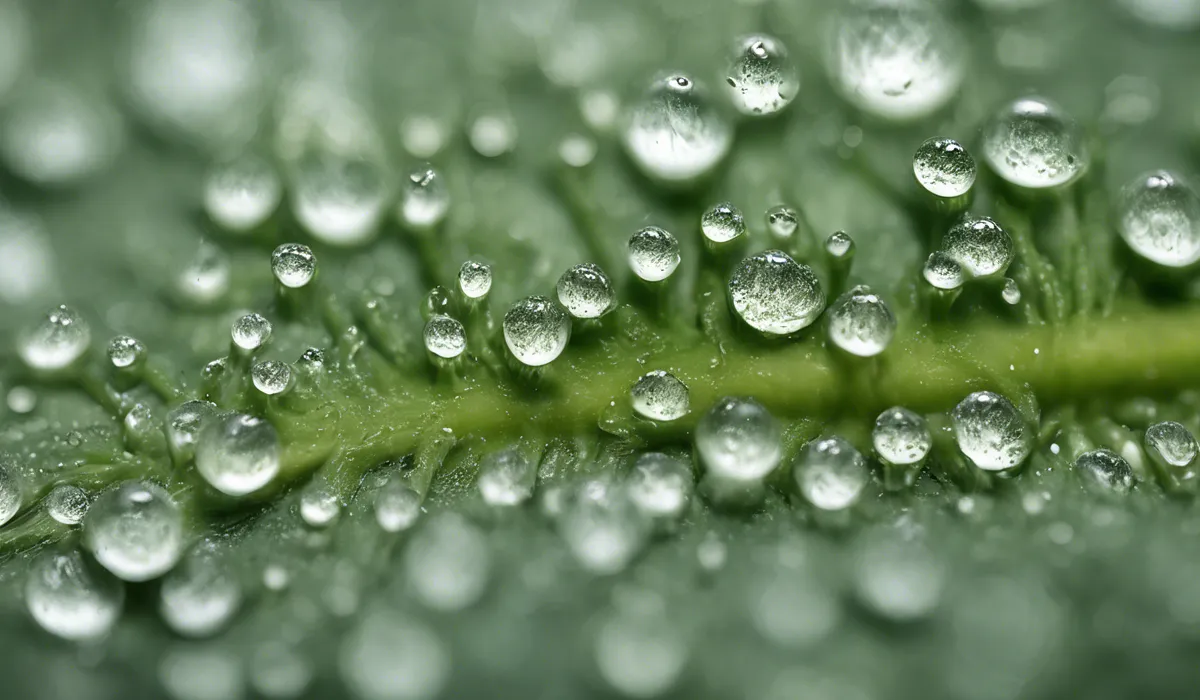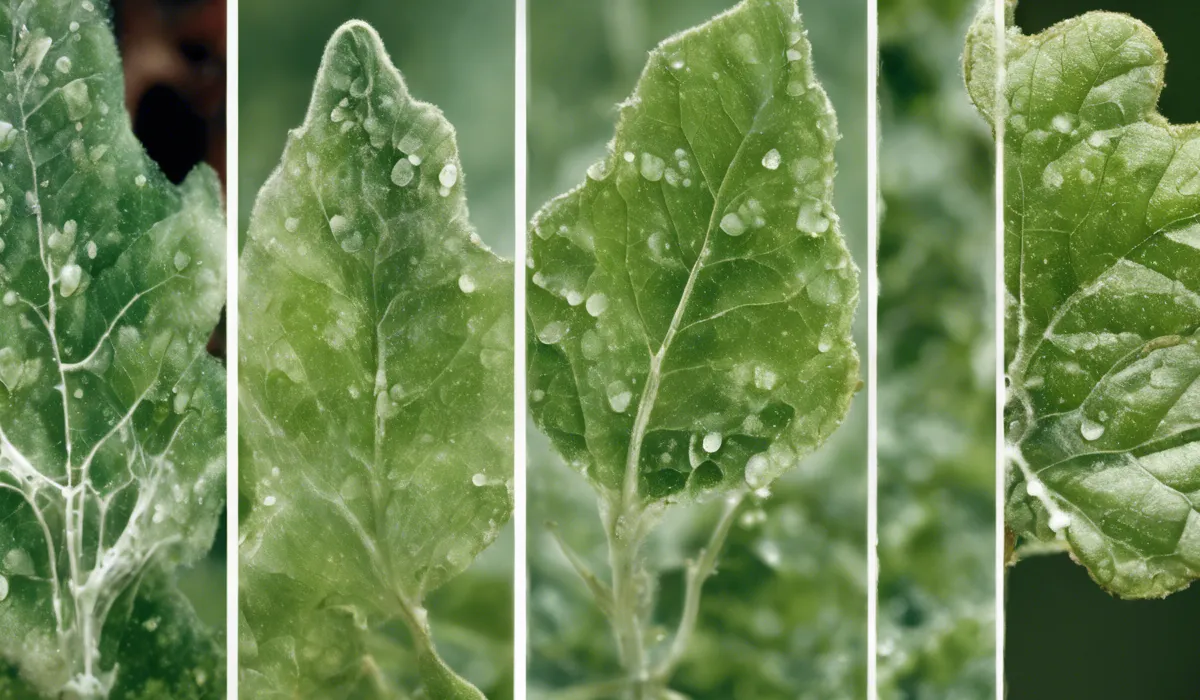Mildew can start to grow within 24 to 48 hours in a damp, humid environment. Factors like temperature and material type influence the growth rate. Typically, mildew requires warmth and moisture to thrive.
Factors Affecting Mildew Growth

Environmental Conditions
Mildew thrives in warm and humid conditions. Typically, a temperature range between 77°F and 88°F is ideal for mildew to grow.
However, it can still occur outside this range, just at a slower rate. Humidity levels above 60% create a welcoming environment for mildew spores to germinate. In areas where the air is moist and stagnant, mildew finds the perfect breeding ground.
To understand how temperature and humidity work together, think of a steamy bathroom after a hot shower.
If the room stays wet and warm without proper ventilation, mildew can quickly start to appear on various surfaces.
Material Susceptibility
Mildew favors organic materials as they provide the nutrients it needs to grow. Materials like cotton, paper, wood, and leather are at high risk.
When these materials remain damp, they become even more susceptible. Think of a wet towel left on the floor or a pile of damp papers; these scenarios create an inviting home for mildew.
Fabrics are particularly vulnerable, especially if they are left in warm, moist environments like laundry rooms or gym bags.
It is essential to keep organic materials dry to prevent mildew infestation.
Ventilation and Air Circulation
Good air flow significantly reduces the likelihood of mildew growth. When air moves freely, it carries away moisture and helps to keep surfaces dry.
Rooms with poor ventilation, such as basements or closets, often have a buildup of humid air, which is exactly what mildew needs to grow.
Opening windows and using fans can improve air circulation. This action dilutes the concentration of mildew spores in the air, making it harder for an infestation to take hold.
Presence of Mold Spores
Mold spores are everywhere in the environment but need the right conditions to grow. When these spores land on a damp surface, they can start to germinate.
It is nearly impossible to keep an environment completely free of mold spores; the key is to control the other conditions that allow them to thrive.
Regular cleaning can help reduce the number of spores, but as soon as a surface becomes damp and warm, the spores that are present can begin to grow into mildew.
Moisture Sources
Moisture can come from many sources like leaks, condensation, or high humidity. It is crucial to identify and fix leaks promptly.
Condensation on windows or pipes can also contribute to a moist environment. High humidity, often during summer months or in certain climates, can make it challenging to keep indoor spaces dry.
Using exhaust fans in bathrooms and kitchens, fixing leaky faucets, and ensuring that the home has proper insulation can help manage moisture levels and prevent mildew growth.
Timeline of Mildew Development

Initial Spore Germination
Within 24 to 48 hours of encountering a damp, warm environment, mildew spores can begin to germinate.
This quick turnaround means that addressing any water damage or spills in the home promptly is vital.
During this phase, you might not see any visible signs of mildew, but it is already starting to take hold on a microscopic level.
Visible Colonies Formation
After initial germination, it usually takes up to a week for mildew colonies to become visible to the naked eye.
Small black or white specks may begin to appear on surfaces, often in grout lines in showers or on walls and ceilings.
This is the stage when mildew is often first noticed, and immediate action can prevent further spread.
Full Colonization and Spread
Between one and two weeks, mildew can fully colonize an area, given the right conditions. It spreads quickly, covering more surfaces and potentially causing damage to materials and health concerns for inhabitants.
As it grows, mildew can start to break down the material it lives on, which can lead to long-term damage if not addressed.
Long-Term Growth and Damage
Over time, if mildew is not removed, it can cause significant damage to surfaces and materials.
It can also lead to a musty odor and contribute to poor indoor air quality, which can affect health, particularly in individuals with allergies or respiratory issues.
Long-term exposure to mildew can result in the need for extensive repairs or replacement of affected materials. It is crucial to address mildew early to prevent these issues.
Prevention and Control of Mildew Growth

Regular Cleaning and Maintenance
Keeping your home clean is one of the most effective ways to prevent mildew growth. Regularly cleaning bathrooms, kitchens, and other areas prone to moisture reduces the food source mildew needs to grow.
It’s also essential to promptly address any spills or water damage. Regular maintenance, such as checking for leaks and clearing gutters, helps prevent moisture buildup.
Moisture Control Strategies
Controlling moisture in your home is key to preventing mildew. Using dehumidifiers can help maintain a lower humidity level, especially in naturally damp spaces like basements. Fans and proper insulation can also aid in keeping surfaces dry.
Exhaust fans in bathrooms and kitchens are crucial for removing excess moisture from cooking and showering.
These strategies, combined with air conditioning during humid months, can significantly reduce the risk of mildew growth.
Mold-Resistant Materials and Paints
When renovating or building, choosing mold-resistant materials can be a proactive step in preventing mildew.
There are paints and primers available that are specifically designed to resist mildew growth. These can be particularly helpful in high-moisture areas of your home.
Materials like moisture-resistant drywall or tiles for bathroom and kitchen areas can also be a wise choice.
These surfaces are less likely to support mildew growth and are easier to keep clean.
Professional Assessment and Remediation
If mildew has become a significant problem in your home, it’s often best to call in professionals.
They can assess the extent of the growth and recommend the best course of action. For severe cases, professional remediation may be necessary to safely and effectively remove the mildew and prevent it from returning.
Professionals have the tools and expertise to address the issue without spreading spores throughout your home.
They can also help identify any underlying problems, such as poor ventilation or hidden moisture sources, that might be contributing to the growth.
FAQs About Mildew Growth
How quickly can mildew start to grow in a damp environment?
Mildew can begin to grow within 24 to 48 hours in a damp and humid environment.
What environmental factors speed up the growth of mildew?
Factors such as high temperature, humidity, and the type of material can accelerate the growth of mildew.
Is warmth necessary for mildew to grow?
Yes, typically mildew requires warmth along with moisture to thrive.
Can mildew grow in cold environments?
While mildew prefers warm environments, it can still grow in cooler conditions if there is enough moisture.
Does the type of material affect how fast mildew grows?
Yes, the type of material influences the growth rate of mildew, with porous materials being more susceptible.
Final Thoughts
Mildew can develop quickly, typically emerging within 24 to 48 hours in moist, humid conditions.
The speed of growth is influenced by factors such as ambient temperature and the type of material affected.
Warmth and moisture are crucial for mildew proliferation, indicating the importance of controlling these variables to prevent its growth.
